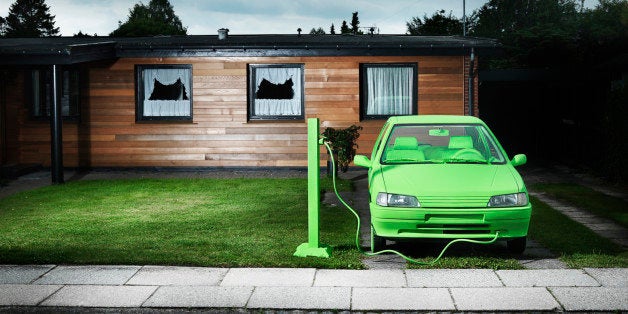
In the 1920s the US was the largest user of electric cars in the world, and they outsold gasoline-powered cars. Their revival can be traced to rapid advances in battery technology, as they use batteries similar to those in laptops and smartphones, and the government has for years supported a national push to adopt electric vehicles (EVs).
Some in the media say it's time for the government to ditch its support for the EV. They couldn't be more misguided and doing so would be a bad idea indeed.
The naysayers ignore evidence that makes a compelling case for continuing the national push until at least 2017, when a review of federal auto policies is scheduled. After all, the two primary reasons for the federal government's interest are as relevant today as in 2008 when President George W. Bush and the Congress created a consumer tax credit for EVs. Electrification of transportation technology:
· Enhances U.S. energy security by replacing dependence on petroleum with a flexible mixture of electricity sources that can be generated here. The result: less need for energy from OPEC producers, unstable regimes in the Middle East, and Russia.
· Is more sustainable on a life-cycle basis because it causes a net reduction in local air pollution and greenhouse gas emission. That advantage is expected to grow as the U.S. electricity mix shifts toward more climate-friendly sources such as natural gas, nuclear, and renewables.
Government programs to assist EV manufacturers, utilities and consumers are certainly not perfect (e.g., should people earning more than $200,000 per year really get a tax credit for purchasing an $80,000 Tesla?) but they need to be tweaked, not abandoned. All things considered, America's push toward transport electrification that began in the 1990s is off to a modestly successful start:
Automakers and dealers are responding. They are offering more plug-in EVs, from three in 2010 to seventeentoday. Sales are rapidly increasing even if the total will fall short of President Obama's ambitious goal of one million on the road by 2015. In the first six months of 2014, EV sales were up 33 percent over 2013. That's in part because the sales price is dropping and EV's are no longer just quirky luxury showpieces. Dealers are offering good leasing deals to allay concerns that batteries may not hold up or resale values will plummet as new models come out. Drivers are also discovering that EVs are nimble and high-powered, offering a seat-of-the-pants experience that extends past the wallet.
Operational drawbacks are being reduced. More public charging stations are available in major cities. Some highways now have super-fast chargers that can deliver an 80 percent charge 30 minutes. New plug-in hybrids (PHEVs) fueled partly by electricity and partly by a back-up gasoline engine have a maximum range equal to or better than a gasoline car. For those who want battery electric vehicles (BEVs) for daily use but also make occasional long trips, some dealers offer free short-term use of gas-powered loaners for long trips.
The market penetration of EVs in the United States is much more rapid than people realize. Compare EVs to conventional hybrid cars such as the Toyota Prius. The process of expanding hybrid sales from early adopters to mainstream consumers took many years but EVs are making the transition more rapidly. EVs, including the Chevy Volt and Nissan Leaf, outsold hybrids by a two-to-one-margin at the three-year point after market introduction. Another way to assess EV penetration is to compare with a country that has different EV policies. Germany has a "pro-environment" tradition but hasn't instituted a large consumer tax credit for EVs, hasn't offered EV drivers HOV-lane access, and hasn't offered manufacturers substantial subsidies for technological innovation. Overall, from 2010 to 2013, Germany has experienced less than half of the market-share growth in EV sales than has occurred in the US. The policy push in the US is making a difference!
Now is not the right time to redo our national EV policies. EVs and their charging infrastructure have not been available long enough to draw definitive conclusions. Automakers, utilities and local governments have made large EV investments with the understanding federal policies will be stable until 2017. Let's give EVs at least that long to prove themselves.